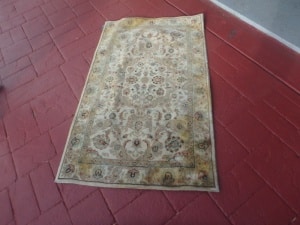How to Remove Pet Stains from Carpets and Upholstery
Posted on blog, carpet cleaning by dryconcepts
Cats and dogs may be our best friends, but not necessarily the best friends of our carpeting, draperies, and upholstery. Neglected animal stains have been an issue ever since people and animals bonded together in companionship.
Understanding the Different Types of Pet Stains
Animal’s Urine
Two types of reactions can take place between the chemicals in an animal’s urine and those in the dyes and fibers of textile furnishings. The first type of reaction is immediately noticeable, as some dyes can change color as soon as urine comes in contact with them. With immediate application of the standard ammonia solution (see below), the color can often be restored.
The other type of reaction can develop slowly over several days to several months and can result in permanent changes to the dyes and fibers. Not only can the dyes change but some fibers may become weakened or destroyed by the aged urine. Furthermore, the decomposing urine can also produce an objectionable odor. These areas become more obvious after cleaning because the soils which hid the changed color and damaged fibers have been removed. Also, dyes weakened by urine can be removed or can bleed during cleaning.
DIY Cleaning Solutions for Effective Pet Stain Removal
Test these solutions first by applying a small amount in an inconspicuous area to determine its effect on the fiber and dye. Wait thirty minutes to an hour to see if any color changes or other problems may arise.
Standard white vinegar solution: one part white vinegar to two parts water.
Standard ammonia solution: one tablespoon clear or sudsy, uncolored household ammonia in one cup of water.
Standard detergent solution: one teaspoon neutral white or colorless detergent in a cup of lukewarm water. Make sure the detergent is bleach free.
DIY Solutions for Pet Stain Removal
The next time you encounter an animal ‘accident’, utilize the following steps:
1.Blot the Liquid: Immediately absorb as much liquid as possible.
2.Apply Detergent Solution: Treat the area with the standard detergent solution (see below). Absorb this into white tissues or toweling.
3.Use Ammonia Solution: Blot the area with the standard ammonia solution. Absorb this into toweling.
4.Apply Vinegar Solution: Blot the area with the standard vinegar solution. Absorb the area with toweling until it is as dry as possible.
5.Drying: Place several dry white terry cloths over the area and weigh down. Allow to dry a minimum of six hours.
Feces Pet Stains on Carpets
Pet feces tend to be easier to deal with than urine. Compact deposits can be quickly removed with a plastic bag, then follow the steps below:
1.Detergent Solution: Clean the surface with the standard detergent solution and blotted dry.
2.Clean and Rinse: Rinse the area with water and blot again.
3.Disinfect: Follow this treatment with a disinfectant recommended by your veterinarian.
Loose feces require the same clean-up procedure as described above for fresh urine removal. This should also be followed with an application of disinfectant. If your pets’ food contains red dye to make it ‘look meatier’, this could leave a red discoloration at the site of the ‘accident’. A professional cleaner may be able to remove this.
Caution: Before applying cleaning solutions, it’s important to test them in an inconspicuous area first, and be mindful that some disinfectants may cause discoloration of textile furnishings.
Professional Carpet Cleaning for Pet Stain and Odor Removal
As long as immediate action is taken to remove the animal stains, little or no change in color should occur and that ‘accident’ will not become apparent after your carpet or other textile has been professionally cleaned.
However, if the pet ‘accident’ is forgotten or never discovered, it will return to haunt you. Dried urine will smell like strong ammonia when humidity is high or when the spot is rewetted. Furthermore, feces and urine can contain harmful bacteria. Often times, a spot that appears small on the surface of the carpeting is many times larger on the underside. The urine can damage both dyes and textile fibers as described above and the change usually isn’t noticed until the textile furnishing is cleaned. The damage caused by aged urine generally requires professional restoration, possibly color tinting, and sometimes removal of the offending carpet and cushion.
A professional cleaner has methods available to minimize the discoloration, disinfect the area and reduce the smell. However, it is often impossible to completely restore the original appearance of a textile furnishing that has been damaged with aged pet urine.
Restore Your Carpets and Upholstery with Dry Concepts
In conclusion, tackling pet stains and odors in your home doesn’t have to be a daunting task. With the right approach and the use of effective DIY solutions, you can maintain the cleanliness and freshness of your carpets and upholstery. However, for those stubborn or aged stains that seem impossible to remove, reaching out to the experts at Dry Concepts can make all the difference. Our professional carpet cleaning services are specially designed to handle pet-related stains and odors, ensuring your home remains a comfortable and welcoming space for both you and your pets. Don’t let pet stains linger any longer. Contact Dry Concepts today for unparalleled cleaning services that bring life back to your carpets and upholstery.



